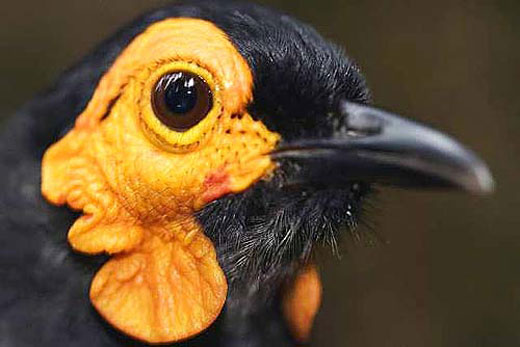Common Myna
Common Myna, also known as the Indian Myna is a close relative to the modern thrush, but is louder and more aggressive. This species has adapted to living in human populated regions. They inhabit territories East of Afghanistan, up to the Southeastern part of China. Small populations of this species also inhabit New Zealand, South Africa, as well as islands in the Indian, Pacific and Atlantic Oceans.
This bird is rather large, reaching 25 cm in length and a wingspan of half a meter, which is notable for a non-predatory bird. The plumage is mostly grayish-brown, with a white underpart. The tail and tips of the wings are black, while the beak and a small area around the eyes is bright yellow, just like the legs.
Mynas initially inhabited only the territories from Afghanistan to China, but because of the fact their diet consists mostly of bugs, they were introduced to many new territories to help reduce the damage various insects do to crop fields. Having great adaptation abilities, Mynas can live in almost any territory, even in the parks and gardens of large cities. These birds are very sociable, aggressive and loud. Fights between multiple individuals are not unusual.
Common Myna feeds mostly off bugs. It runs around on the ground, searching for worms, larvae and bugs. It can also eat a variety of fruit, grain, seeds and berries, as well as small mice, frogs and even bird eggs – this bird is an omnivore, that eats almost anything. During the harvest season, Mynas often visit farm fields and eats worms and other small creatures that have been dug up by the plough. Farmers like these birds because they help get of pests on the farm fields.
In the cities, Mynas usually construct nests under rooftops. Out of the cities, these birds usually nest in treetops or tree cavities. If there conditions are well, the bird will use the same nest for multiple years. These birds live in family groups all year round, except the mating period, when they find a partner. Both Mynas participate in constructing the nest and raising the young birds. 2-5 eggs are laid at a time and they hatch in 17 days. Common Mynas learn to fly a few weeks after birth and after one more week already start hunting. A pair of birds can hatch up to three sets of eggs during one summer.
As with many other species that humans have introduced to areas far from their natural habitat, Mynas sometimes cause more harm than good. Due to their incredible reproduction rate, they outcompete most other birds that have the same diet. Because of their adaptation abilities, Mynas are slowly driving out other bird species from their territories.




